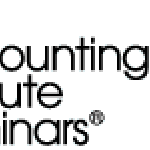- Industria: Accounting
- Number of terms: 7464
- Number of blossaries: 0
- Company Profile:
The department that maintains records of each individual's employment.
Industry:Accounting
Having the power to influence. Most audit evidence is persuasive, but not conclusive.
Industry:Accounting
Having the ability to permeate. An error is pervasive if it is material to more than one of the primary financial statements.
Industry:Accounting
Expression of an opinion on an item in financial statements is not permitted as part of a disclaimer or adverse opinion on the financial statements as a whole because it would tend to overshadow or contradict a disclaimer of opinion or an adverse opinion.
Industry:Accounting
Audit planning is developing an overall strategy for conduct and scope of the audit. The nature, extent, and timing of planning vary with size and complexity of the entity, experience with the entity, and knowledge of the business. In planning the audit, the auditor considers the entity's business and its industry, its accounting policies and procedures, methods used to process accounting information, the planned assessed level of control risk, and the auditor's preliminary judgement about audit materiality.
Industry:Accounting
The number of items in the population from which a sample is drawn.
Industry:Accounting
A statement as to what the CPA believes. An example is an opinion that the financial statements are presented fairly in conformity with U.S. GAAP. The opposite is negative assurance, a statement about what the CPA does not know. A statement that the CPA was "not aware of material modifications that should be made to financial statements for them to conform with U.S. generally accepted accounting principles" is negative assurance used in review reports.
Industry:Accounting
The positive form of receivables confirmation asks the customer to respond whether the customer agrees or disagrees with the client's reported receivable balance. The negative form of accounts receivable confirmation asks the client's customer to respond only if the customer disagrees with the balance determined by the client. The negative form is used when controls over receivables are strong and accounts receivable consists of many accounts with small balances. The positive form is used when controls are weak or there are fewer, but larger, accounts.
Industry:Accounting
The auditor of a client for a prior year who no longer audits that client.
Industry:Accounting
